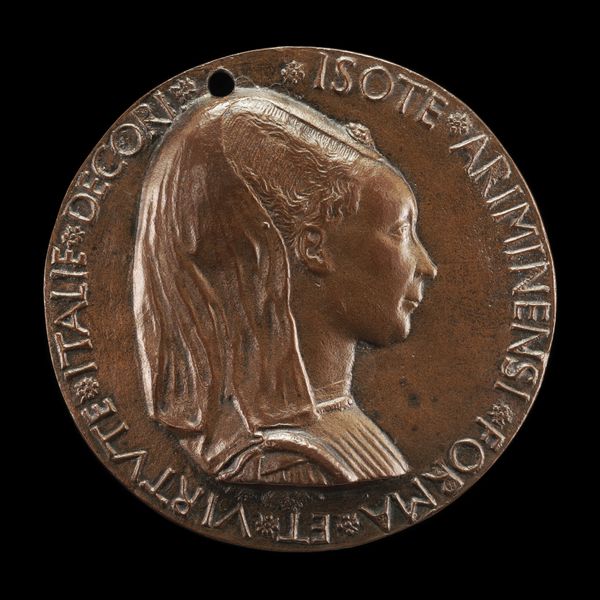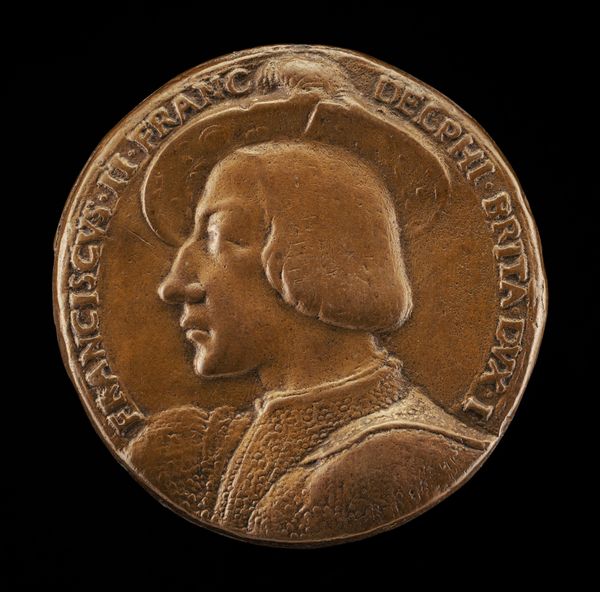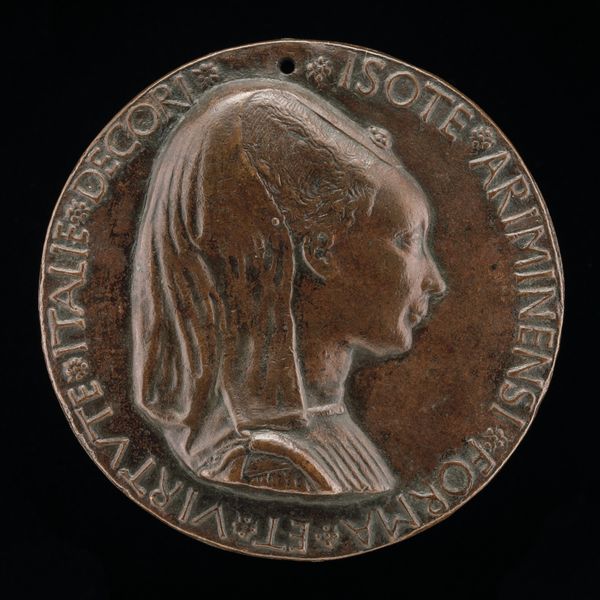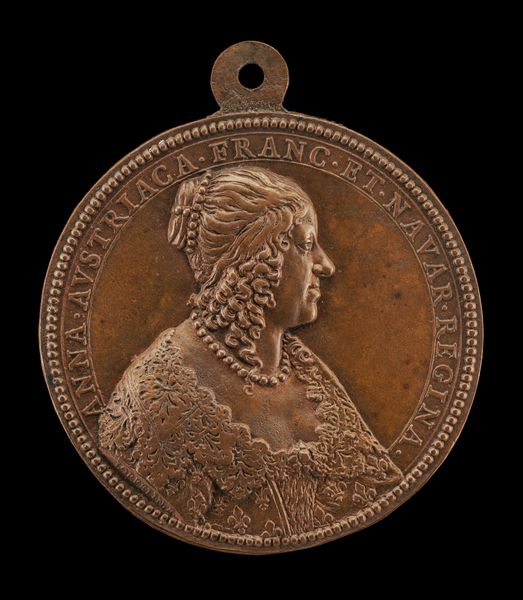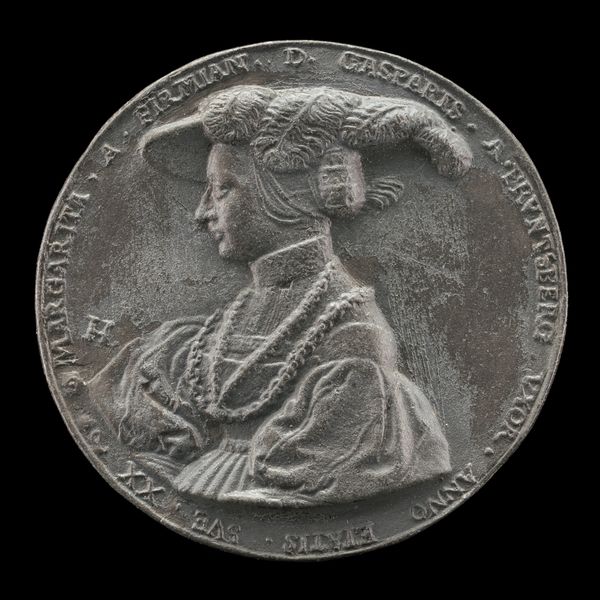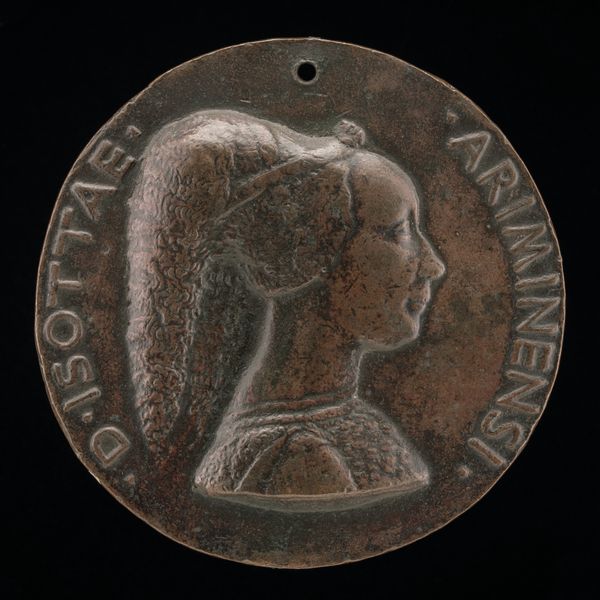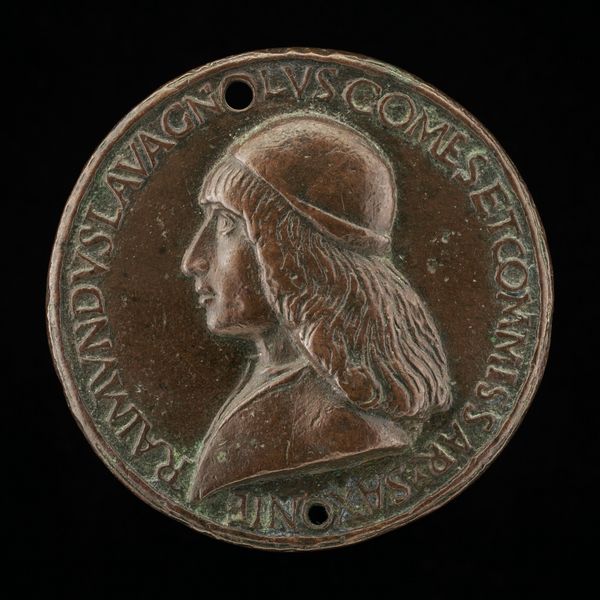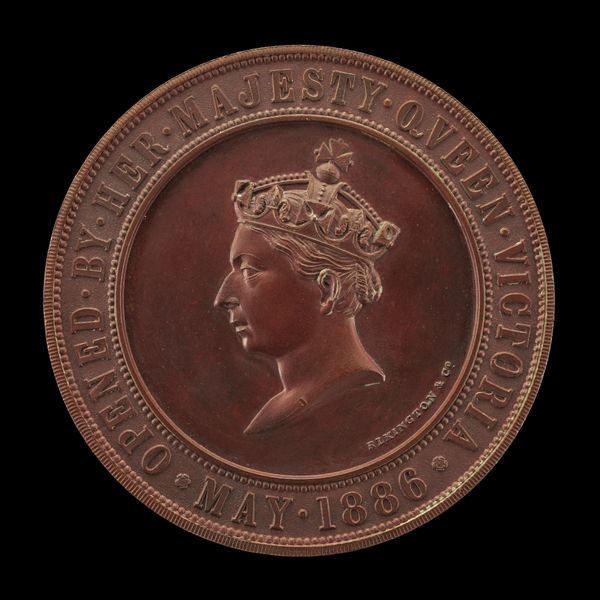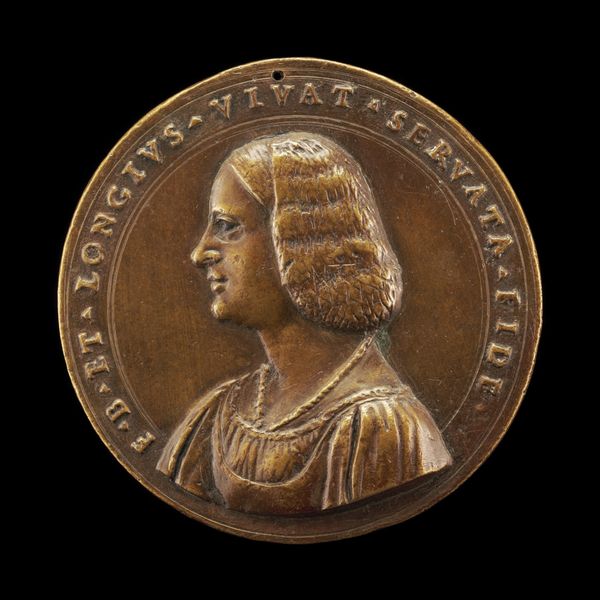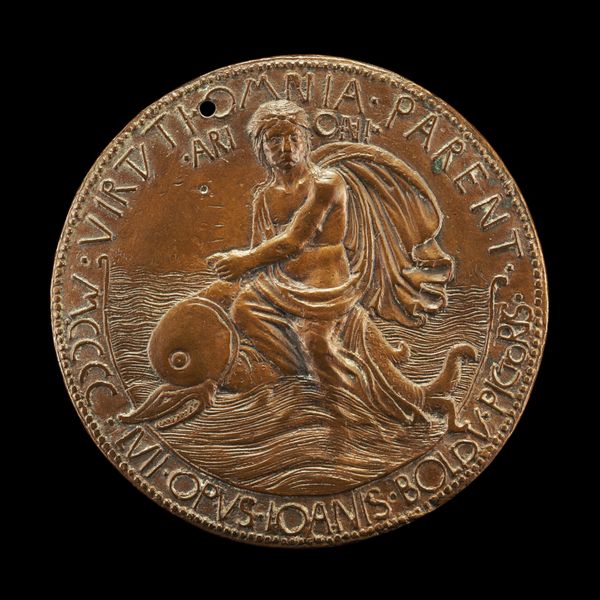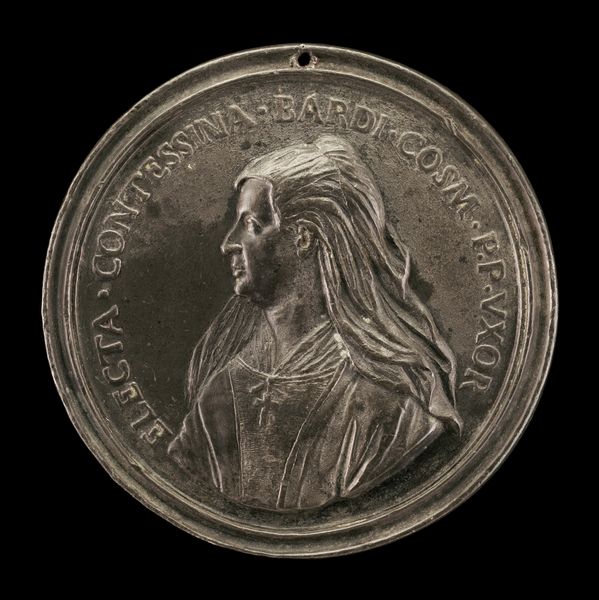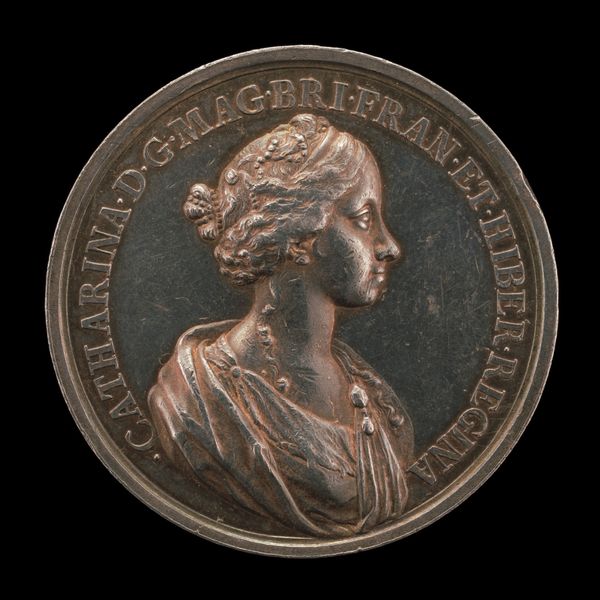![Lavinia Fontana, 1552-1614, Bolognese Painter [obverse] by Felice Antonio Casone](/_next/image?url=https%3A%2F%2Fd2w8kbdekdi1gv.cloudfront.net%2FeyJidWNrZXQiOiAiYXJ0ZXJhLWltYWdlcy1idWNrZXQiLCAia2V5IjogImFydHdvcmtzLzdhNmJkNzAwLTgzOGMtNGIxNS05OTNhLWRiZjBiYmFlOGI4Yy83YTZiZDcwMC04MzhjLTRiMTUtOTkzYS1kYmYwYmJhZThiOGNfZnVsbC5qcGciLCAiZWRpdHMiOiB7InJlc2l6ZSI6IHsid2lkdGgiOiAxOTIwLCAiaGVpZ2h0IjogMTkyMCwgImZpdCI6ICJpbnNpZGUifX19&w=3840&q=75)
Lavinia Fontana, 1552-1614, Bolognese Painter [obverse] 1611
0:00
0:00
bronze, sculpture
#
portrait
#
sculpture
#
bronze
#
sculpture
#
italian-renaissance
Dimensions: overall (diameter): 6.55 cm (2 9/16 in.) gross weight: 75.12 gr (0.166 lb.) axis: 12:00
Copyright: National Gallery of Art: CC0 1.0
Curator: This is a bronze medal dating to 1611, portraying Lavinia Fontana, the renowned Bolognese painter. The medal is attributed to Felice Antonio Casone. Editor: The solemn profile gives the impression of someone carrying great knowledge. Bronze portraits like this are timeless, solid… the weight of history made manifest. Curator: Indeed. Fontana, as a female artist in the late Renaissance, had to overcome considerable social obstacles, primarily those imposed on women engaging with any professional life at the time. A medal like this signified respect and recognition in a highly male-dominated sphere. The lettering around the perimeter further enshrines Fontana’s memory and influence, declaring her importance. Editor: I like the details: the subtle way the drapery folds and gathers, the soft curve of the cheek, the elaborate hair and modest jewelry. All create an image of dignified strength, without romanticizing the sitter, which gives the portrait authenticity. Curator: Considering Fontana's success as a portraitist, there’s a poignant layer of context: Casone is representing the representer, capturing the essence of someone known for capturing others on canvas. Editor: I love that! The meta of the thing… the artist memorialized in bronze. Imagine having something like that made today! Curator: And it highlights her professional identity rather than simply familial or societal role, making it quite a statement of its era. Medals like this were, and still are, tools in shaping legacy and reputation. Editor: There’s an undeniable feeling of reverence here… almost quiet admiration. That combined with its subject, makes it fascinating to contemplate its origins, its story and the history it’s holding on its surface. Curator: Absolutely, and reflecting upon pieces like this expands how we approach understanding both art history, and also broader socio-cultural histories of its time.
Comments
No comments
Be the first to comment and join the conversation on the ultimate creative platform.
